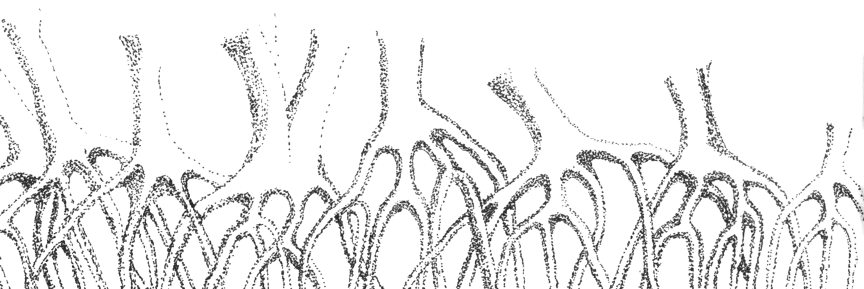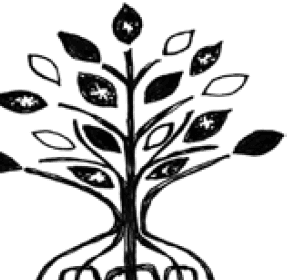Slow and Sweet on our Lips
Remmon E. Barbaza
. . . And she, swimming now among Stanley’s
Turtles and lilies, slowly rises to the upper rim
Of the pond to dance with him a kind of waltz
To the beat of three finger bones— dactyls swinging
Back to anapests, to and fro like the wet hammock
In the garden. She clears her throat, hums
The lauds: Nothing here. There’s nothing
To have here but slow, sweet time.
- Marj Evasco, “A Turtle-Poet Dreams, Given Time”
It must have been one summer of so many years ago, in 1999. My wife Arlene and I were seated at a small café near Ponte Vecchio, along the Arno River in Florence, during one of the many trips we managed to squeeze into our schedule, and fit into my humble scholar’s budget, as I was working on my doctorate in Munich. While having a cup of espresso, I checked my email and saw Marj Evasco’s invitation to contribute a piece for the Ideya journal’s special issue on the liberal arts. I was only glad and honored to have been invited to be part of that issue, and I readily said yes.
Today, more than twenty years hence, as I sit at my desk at our home in Antipolo on this quiet morning in September, with nary a sound outside the window, save for the Olive-backed sunbirds’ faint but unmistakable song as they feed on the nectar of the bleeding-heart vine in our garden, I look back at that time as I sat in a café along that majestic river in the Tuscan capital, and wonder where all those years have gone.
Nothing here. There’s nothing to have but slow, sweet time.
What is ten years? What is twenty years? How to even begin to measure such a span of time? And what of a lifetime?
Nothing here. There’s nothing to have but slow, sweet time.
Perhaps I could count on my fingers the number of times Marj and I met face-to-face since she invited me to contribute that little piece to which I gave the title “The Art of Liberating.” From that time on, having returned to the Philippines for good, I would find myself at her lovely place at Hagdang Bato in Mandaluyong, where Marj hosted a wonderful dinner for my wife and me, along with her fellow poets Susan Lara and Danny Reyes, and her lovely daughter Mayann. My memory still keeps the feel and smell of wood in her home, the sight and scent of books in every corner of the house, and the warmth of plants and flowers that made up a little garden right outside the main door.
Indeed, it is a privilege to be invited to a poet’s home, for one can glimpse the inner space in which she dwells.
Many years later, in 2017, as I was conducting interviews of earthquake survivors in Maribojoc, Bohol for a research project on disaster and resilience, to my joy and surprise, I found out that Marj was also in Tagbilaran, not far from where I was. How fortunate of me, I thought, to meet with Marj in the land where she was born and grew up. Seated at a restaurant that offered a marvelous view of the setting sun while enjoying warm coffee, Marj gave me a book she had edited and had just released, The Bohol We Love: An Anthology of Memoirs. It was a good time for us to catch up with each other. Before the sun finally hid behind the horizon, we bade goodbye—to this day, the last time we had met face-to-face.
Since the start of the pandemic that brought the whole world to a standstill in March 2020, Marj and I got in touch again. She sent me via Grab courier another book, Sustaining the Archipelago: An Anthology of Philippine Ecopoetry, which features her poems (by this time, I had lost count of the number of books she had so cheerfully and generously given me). I was especially drawn to “Acquainted with Lightning”: “In the wild spaces of our earth/We stand together, trees/Of a tropical jungle . . .”
In those days, being stuck at home like almost everyone else, I picked up my camera to document scenes at home during the pandemic. For the first time, I discovered those beautiful little creatures called the Olive-backed sunbird, which, unbeknownst to me before, have been regularly coming to our house in Quezon City to feed on the nectar of the nong nooch vine growing right outside our house, on the wall by the main door. Marj saw the photos of the lovely birds and the nong nooch vine that I would post on Instagram, and she asked me about the vine. I promised her that my wife and I would propagate a cutting and give it to her. It took a while, but eventually I was able to send it, and soon Marj was growing it. The sunbirds (tamsi in Visayan, as Marj told me) started to come and feed on the nectar of the golden garland, as those bright yellow flowers are commonly known, right outside the main door of her house.
A few months later, with my father-in-law’s sudden and tragic death, Arlene and I had to divide our time between our home in Quezon City and my mother-inlaw’s house in Antipolo so she wouldn’t be left alone. The words from “Acquainted with Lightning” now rang as if they were written for me as I tried to come to terms with the death and the sudden loss of a loved one and navigate what was, up till then, a completely unfamiliar terrain of grief. Over the years, I had many occasions to discuss Heidegger’s concept of death (“being towards death”), and I even offered a course on the philosophy of death one hot and humid summer. Still, none of those prepared me for the experience of the death of someone so close to me. It broke my heart to see my wife all but falling on the ground as she bore the weight of such terrible pain. Here, again, I find recourse only in the words of the poet:
Against our sturdy trunks
Birds knock and carve holes
Right into our hearts
For shelter. And down at the base
Where our feet walk underground,
We make friends with worms.
As we stand together in this
Last wilderness, we gape in awe
When lightning cracks the sky.
We fear the sound and smell
When one of us is struck
Soul-seared and burning.
Indeed, it is only in hindsight that I realize that through Marj I had been gifted with a nearness that comes to be when a poet and a thinker meet. When the thinker Heidegger himself encountered the poet Hölderlin, he was made aware that the poet and thinker “dwell near in mountains farthest apart.” One recalls from his lecture, “The Nature of Language” [Das Wesen der Sprache], the following passage: “Presumably this neighborhood is not a mere result after all, brought about only by the fact that poetry and thinking draw together into a face-to-face encounter; for the two belong to each other even before they ever could set out to come face to face one to the other.”
Such is the neighborhood where the poet and the thinker dwell, near each other, in mountains farthest apart.
Where have all these years gone? What is ten, twenty, or thirty years? What is a lifetime?
Nothing here. There’s nothing to have but slow, sweet time.
I may have “to sit a thousand years” with Marj, master of the word’s sound and keeper of the earth’s silence, to catch the likeness of even just a moment of this most wondrous gift of light and love in this life—slow, and sweet, as the poet’s words can only be on our lips.








